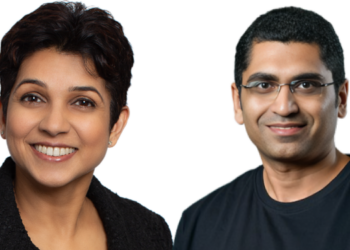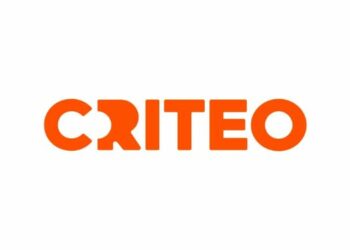The digital universe is one of the most dynamic places today. It is perhaps the only media where a brand can engage and interact with its target audience in real-time. It relies heavily on technology to analyze the comprehensive performance of a digital campaign, that can be optimized using different strategies to get the best possible returns.
Brand performance is indigenous to the brand and can be measured using a number of metrics such as growth in the number of audiences, audience interaction, brand penetration, and more. However, at the end of the day, a common metric against which the overall performance of a campaign is measured is the number of conversions that the band saw or the impact on revenue.
There are several strategies that brands can employ to drive brand performance and to discuss this Pankaj Sharma, Country Head, MGID is joined with Amit Sethiya, Head of Marketing, Syska Group. Below are a few excerpts from their discussion.
Pankaj Sharma: How should brand marketers plan their strategy with the evolving digital marketing ecosystem? What are the fundamental approaches?
Amit Sethiya: One of the first things to understand about the digital ecosystem is that it is constantly in a state of evolution. A marketing strategy that worked very well today might become obsolete tomorrow. In such a scenario, digital marketers have to constantly be aware and stay updated on the change in trends, and most importantly about the change in technology. For example, how video ads have been adapted to a vertical format to reflect the change in user consumption patterns.
Before one can think of approaches to run a marketing campaign, one needs to be clear of the objective or the end goal. This would drive the selection of the approach and which part of the sales or user journey funnel is being targeted. The next step would be identifying the target audience for the campaign, and which would be the best and most relevant methods to reach out to them with the appropriate communication. The last step would be creating the right content and selecting the right media mix for the content. These are the most fundamental steps to be kept in mind when approaching or planning a digital marketing campaign.
Pankaj Sharma: Do you see any shifts towards performance-based ad campaigns among brands in the post-COVID reality?
Amit Sethiya: As per recent trends a shift has been observed in the allocation of budgets by brands for branding and performance campaigns. The majority of marketers plan to spend 60% of their budgets on performance marketing campaigns with linkage to ROI. Out of the budget allocated to brand building, less than 40% has been set aside for in-app branding. This clearly shows that more ad money is now moving to outcome-based advertising and the sentiment at present is less oriented towards brand building[1].
Pankaj Sharma: How can brands striving for brand building also achieve performance marketing success? Or is brand work inconsistent with the metrics, measurement, and real-time nature of performance marketing?
Amit Sethiya: For a brand, running a successful branding campaign that also achieves performance marketing success is all about striking the right balance and this starts at the very beginning or at the planning stage of the campaign. Marketers should keep in mind that they need to encourage sales in the short term and build their brand in the long term. Striking a balance between the long term and short-term is not easy, and even more difficult to measure its success.
However, in order to make this possible changing one’s point of view would help. In a customer journey, the first part of the funnel is attributed to brand awareness while the lower parts of the funnel are attributed to performance or lead generation. Data-driven performance marketing can be applied much more effectively to performance and demand generation activities. If marketers have a better understanding of their target audience’s preferences and behaviors at the early stages of their buying journey, companies can see up to 30% growth and 10% incremental top line[2].
This approach also shows that it is possible to have metrics, measurement and real time data in place for a branding campaign like one does for performance marketing campaigns.
Pankaj Sharma: What are the key tactics a brand can deploy at various stages of the marketing funnel?
Amit Sethiya: Considering the recent changes and trends in digital marketing strategies, the first thing one needs to understand about the marketing funnel is that it is not static but dynamic in nature. In addition to the four generally accepted stages of the funnel – awareness, interest, consideration, and conversion, there are two more stages one should consider, especially for the digital ecosystem – loyalty and advocacy. According to this approach, the marketing funnel does not end with the user making a purchase but engages with them to convert them into repeat buyers.
Some of the tactics to be considered at different stages of the funnel can be organic search, social media, content, email marketing, and referral links at the first stage of awareness. At the second stage of interest influencer referrals, reviews, content such as tutorials or press blogs, etc. can be good tactics. At the conversion stage, a very important factor to be kept in mind is the landing page in addition to content such as helping with the sign-up process, explainer content about the product or service, etc. To entice loyalty and advocacy from a buyer, useful tactics can include personalized emailers or in-app messages, product updates, rewards or gratifications, and feedback outlets among others.
Pankaj Sharma: What are the most crucial digital communication channels to drive brand performance? How can you measure brand performance?
Amit Sethiya: In today’s scenario there are several platforms that can be leveraged to drive brand performance, and there are more coming up every day. However, some common channels that are essentials for an effective brand performance campaign include social media. The other channels can be influencer marketing, email marketing, search engine optimization, PPC campaigns, affiliate marketing, and mobile marketing. All these channels have one thing in common which is an effective content marketing strategy. The content created for any of these channels needs to be engaging and should be able to attract the attention of the user as well as retain it.
The measurement metrics or KPIs would be different for each channel and would directly link back to the objective of the campaign. The metric should be quantifiable and aligned with the goal. Metrics can be further broken down into leading indicators, which would help in estimating whether the campaign is on track or if any corrective measures need to be taken.
In the case of an email marketing campaign, the metric can be conversion rate, CTR, email open rate and a leading indicator can be the delivery rate of the email. In the case of influencer marketing, the metrics measured are views, post engagement such as likes, shares, swipe ups etc., and impressions on the post. For search engines, marketing key metrics measured are ad impressions, clicks, cost per click, and analytics page reports. In the case of mobile marketing the metrics differ slightly and include social media metrics, retention rate, and interaction rate.
Pankaj Sharma: How effective is native advertising when it comes to building awareness and driving conversions?
Amit Sethiya: Native advertising has shown wonderful results for brands in driving more conversions. It has been found to be most effective when targeting the upper stages of the marketing funnel for objectives such as brand awareness, building brand perception, and influencing purchase decisions. The reason behind this is that native advertising blends a brand’s content or ad into the overall content of a website without disturbing the user experience. It enables brands to build a narrative that takes consumers on a journey; it shares a story through a series of ads. In short, native ads not only help drive conversions but also improves the overall lifetime value of the customers acquired.
About the Guest:
Amit Sethiya is the Head of Marketing at Syska Group. A result-oriented professional with 17 years of rich experience across several categories. He has played a key role in positioning Syska LED as a thought leader within the category and in the strategic lateral expansion of the brand in more than 4 new product segments. He has been enlisted in the Top 50 most influential marketing professionals 2018 by AFAQ and OOH Most Influential Leaders List 2020 among much such prestigious recognition.
[1]https://www.exchange4media.com/digital-news/majority-marketers-plan-to-spend-60-budget-on-performance-marketing-campaigns-inmobi-107096.html
[2]https://www.mckinsey.com/business-functions/marketing-and-sales/our-insights/performance-branding-and-how-it-is-reinventing-marketing-roi















